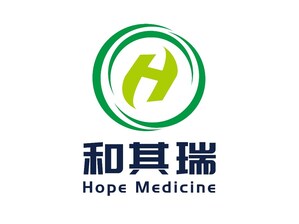Positive Outcome from a Phase Ib Study in Australia Treating Patients with Androgenic Alopecia
SHANGHAI, Jan. 14, 2024 /PRNewswire/ -- Hope Medicine Inc. ('HopeMed'), a clinical-stage innovative biopharmaceutical company, announced recently that the company has completed a Phase Ib study, "An Open-Label Study, to Evaluate Safety, Tolerability, and Efficacy in Male and Female with Androgenetic Alopecia Treated with HMI-115 over a 24-Week Treatment Period".
This study is led by Professor Rodney Sinclair and included 12 male and 4 female patients in Australia with androgenic alopecia (AGA). HMI-115 demonstrated positive efficacy results. It is also safe and well-tolerated. Specifically, in the 12 male patients at the end of the trial, the mean non-vellus target area hair count (TAHC) increased by 14 hairs/cm2, compared to that of the baseline. This increase is statistically significant indicating an apparent confidence of treatment effect.
"The positive outcome of this trial is very encouraging," said Professor Rui-Ping Xiao, founder of Hope Medicine, "this study is the first ever to show that prolactin receptor blockade can promote hair growth in patients with androgenic alopecia and may provide a novel therapeutic approach."
"Encouraged by the success of this proof-of-concept trial," said Nathan Chen, CEO, "Hope Medicine has commenced recruitment for a Phase II study of AGA in China with 180 patients. We aim to achieve full PoC by the end of 2024."
About Androgenic Alopecia
Androgenetic Alopecia is the most common type of hair loss and affects up to 70% of men and 40% of women. While male and female pattern hair loss is commonly believed to be due to a combination of genetics and the male hormone dihydrotestosterone, the detailed mechanism remains unclear. Our data points to a role of prolactin/prolactin-receptors signaling in the disorder.
About Hope Medicine
Hope Medicine Inc. is a science-driven clinical-stage biopharmaceutical company with research laboratories and offices in Beijing, Shanghai, and Nanjing, China. HopeMed is established on the in-depth expertise in translational medicine and decades of research of Professor Rui-Ping Xiao's laboratory at the College of Future Technology of Peking University. Based on excellent scientific research and to improve the quality of life, HopeMed is committed to the research, development, and commercialization of first-in-class medicines for common and major diseases that threaten human health. The company finalized a Round B financing in May 2021 following a worldwide exclusive license agreement with Bayer AG on the development and commercialization of HMI-115. Besides HMI-115, HopeMed also established a diversified pipeline with internal R&D based on Professor Xiao's breakthrough research at the Institute of Molecular Medicine (IMM) at Peking University via a joint research lab. As a result, HopeMed brought in MG53 from Peking University, which is a protein with a new target. Preclinical studies have shown that this protein has a promising therapeutic effect on indications such as acute myocardial infarction.
Forward-Looking Statements
This press release contains forward-looking statements that are primarily based on the current outlook, expectations, estimates, and projections of the company's management team. When using "anticipate," "believe," "may," "design," "effect," "assess," "expect," "predict," "target," "aim," "purpose" and any other similar words and expressions, in references to the company, the intention of the statement is forward-looking. Forward-looking statements are subject to risks and uncertainties, many of which are difficult to predict and often beyond the company's control, which could cause actual results to differ from the forward-looking statements. The company undertakes no public announcement obligation to update or revise any forward-looking statement.
CONTACT: Amber Chen, pr@hopemedinc.com
SOURCE Hope Medicine Inc.

WANT YOUR COMPANY'S NEWS FEATURED ON PRNEWSWIRE.COM?
Newsrooms &
Influencers
Digital Media
Outlets
Journalists
Opted In





Share this article